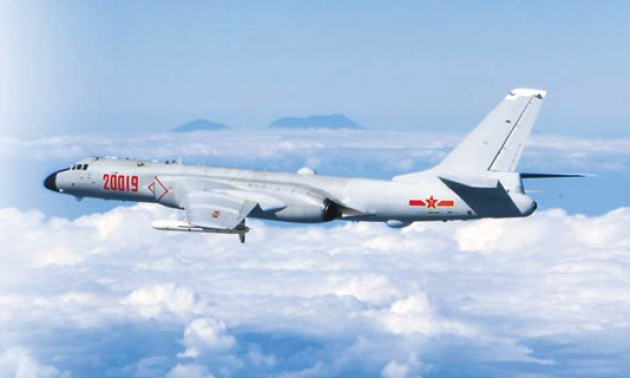Old Soviet warhorse fills the gap as H-20 is delayed
29 January, 2018

A PLA H-6K bomber flys above the Taiwan Strait. Taiwan's Yushan Mountain is seen in the background. Photo: PLA
The PLAAF will used a modernized version of the 1960s-era Tupolev Tu-16 as it tests Taiwan's coastal defenses
China’s air force will have to continue relying on an aircraft that first saw service in the late 1960s as a copycat of a redundant Soviet design as it waits for the much-anticipated H-20 heavy strategic bomber.
As a stop-gap measure, Xi’an Aircraft Industrial Corp in central Shaanxi province is expediting production of the H-6K, a modernized version of the H-6 series that China modeled on the old Tupolev Tu-16 bomber.
The H6-K uses the same Soviet airframe but incorporates more recent Chinese technologies in its wings, air inlet and weapons bay. It also has a stealth coating, which wasn’t available to the original Soviet designers.
It might be a hybrid, but the bomber has a vital role to play for the People’s Liberation Army Air Force: it must be able to destroy airbases on Taiwan’s eastern, or Pacific Ocean coastline.
There are rumors the PLA plans to extend the H-6K’s operations zone as far as the US territory of Guam. By that time it will have acquired new avionics and fly-by-wire systems, as well as an air refueling probe and drogue to enable longer flights.
Other reports suggest that the PLA Navy may establish an H-6K squadron that is capable of carrying YJ-12 and other air-launched anti-ship missiles to boost its firepower.
Analysts say the PLAAF will need bombers that are more versatile and reliable to support China’s declared objective of militarily encircling Taiwan and enforcing its claims to atolls in the South China Sea.
So far the H-6K has been in active service with squadrons at three PLAAF regiments, all reportedly stationed in central provinces, that have been tasked with sending missions to test Taiwan’s air defenses. These are likely to become commonplace as China steps up its rhetoric against the island.
It is believed the H-6Ks, which carry an air-launched variant of the CJ-10 land-attack missile with a range of up to 1,500 kilometers, could pose a significant threat not only to Taiwan but also Japan and Guam if their stealth technology allows them to elude radar detection. The H-6K regiments can simultaneously fire 360 missiles if all bombers are used.
